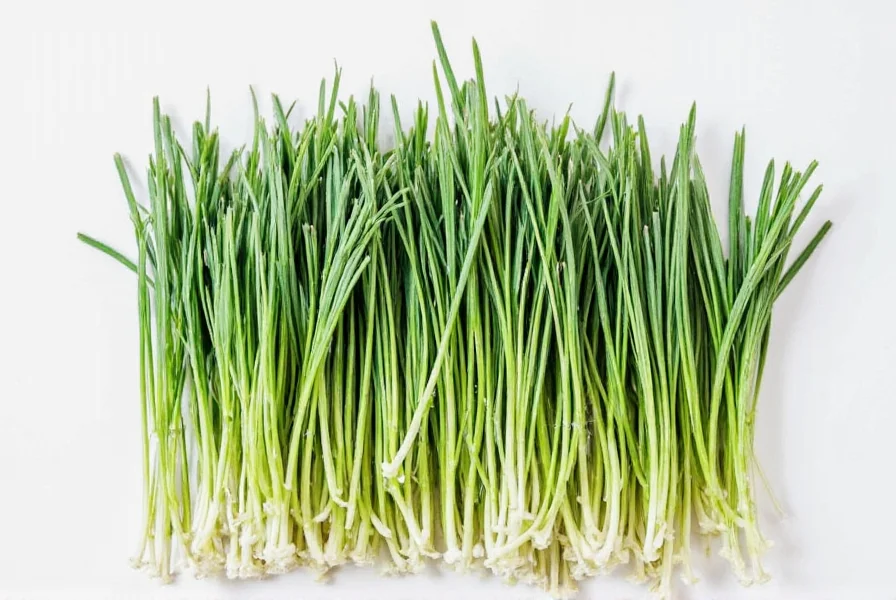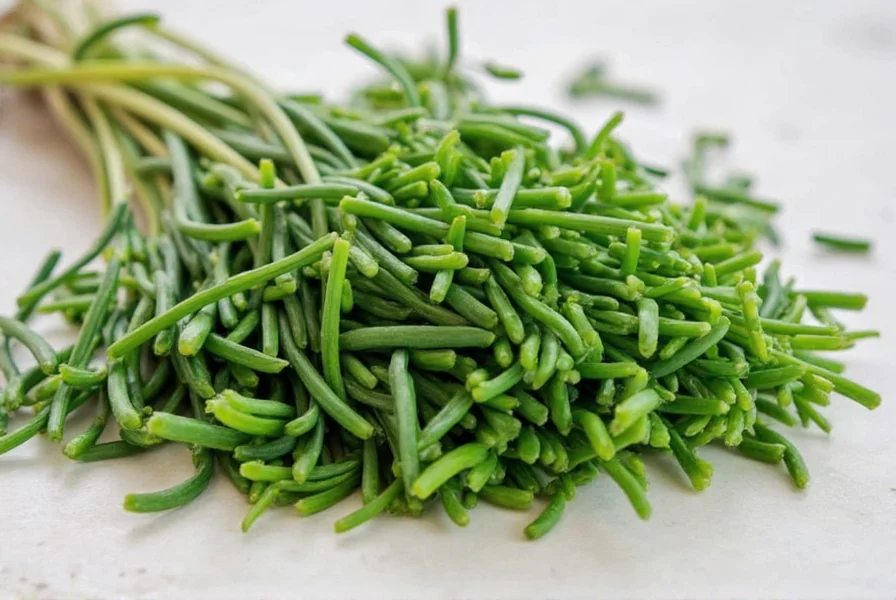Drying chives preserves their delicate onion flavor for year-round use in cooking. Fresh chives have a short shelf life, but properly dried chives maintain their distinctive taste and can enhance dishes long after the growing season ends. This comprehensive guide covers three reliable drying methods, preparation techniques, storage solutions, and usage tips to help you maximize your chive harvest.
Preparing Chives for Drying
Before drying chives, proper preparation ensures optimal flavor retention and prevents spoilage. Start by harvesting chives in the morning after the dew has dried but before the sun becomes intense. Choose healthy, vibrant green stalks free from blemishes or yellowing.
Carefully wash the chives under cool running water to remove any dirt or debris. Gently shake off excess water or use a salad spinner on low speed. Pat dry with clean kitchen towels—moisture is the enemy of successful drying. For best results, trim any discolored ends and separate the chives into uniform bundles if air drying, or lay them flat if using a dehydrator or oven.
Three Effective Methods for Drying Chives
Air Drying Chives
Air drying is the most traditional method that requires no special equipment. This best way to dry fresh chives without electricity preserves maximum flavor but takes longer than other methods.
Bundle 5-10 chive stalks together with kitchen twine, ensuring the cut ends are aligned. Hang the bundles upside down in a dark, warm, well-ventilated area with low humidity. A closet or pantry often works well. Cover the bundles loosely with a paper bag with holes punched in it to protect from dust while allowing airflow.
Complete drying typically takes 1-2 weeks. The chives are ready when they snap easily rather than bend. This method for preserving chives long term works best in dry climates but may not be suitable in humid environments where mold could develop.
Oven Drying Chives
Oven drying offers a faster alternative when you need dried chives quickly. This method requires careful temperature control to prevent burning the delicate herbs.
Preheat your oven to its lowest setting, ideally between 140-170°F (60-77°C). Spread washed and thoroughly dried chives in a single layer on a parchment-lined baking sheet. Place the baking sheet in the oven with the door slightly ajar to allow moisture to escape.
Check the chives every 30 minutes, rotating the tray for even drying. Oven drying chives without losing flavor typically takes 2-4 hours. The chives are done when completely crisp and brittle. This drying chives in oven temperature method works well for small batches but requires close monitoring to prevent scorching.
Dehydrator Method
Using a food dehydrator provides the most consistent results for drying chives. This method maintains optimal temperature and airflow for perfect dehydration.
Arrange washed and dried chives in a single layer on dehydrator trays, ensuring they don't overlap. Set the temperature to 95°F (35°C) and dry for 2-4 hours. Check periodically after the first hour—thinner chives dry faster than thicker ones.
The dehydrating chives without losing flavor technique preserves the most essential oils and color. When properly dried, chives will be completely crisp and break easily. This method offers the best balance of speed and quality for preserving chives long term.
| Drying Method | Time Required | Temperature | Equipment Needed | Flavor Retention |
|---|---|---|---|---|
| Air Drying | 1-2 weeks | Room temperature | Twine, paper bag | Excellent |
| Oven Drying | 2-4 hours | 140-170°F (60-77°C) | Oven, baking sheet | Good |
| Dehydrator | 2-4 hours | 95°F (35°C) | Food dehydrator | Excellent |
Proper Storage of Dried Chives
How to store dried chives properly determines their shelf life and flavor retention. After drying, allow chives to cool completely at room temperature before storing—any residual warmth can create condensation inside containers.
Crumble the dried chives by hand into small pieces, removing any larger stems. Store in airtight glass containers or vacuum-sealed bags away from direct light. Dark glass jars or opaque containers work best to protect from light exposure.
For optimal preservation, include a food-safe desiccant packet in the container to absorb any residual moisture. Properly stored dried chives maintain their flavor for 6-12 months. Check periodically for any signs of moisture or mold, which indicate improper drying or storage conditions.

Using Dried Chives in Cooking
Understanding how to use dried chives instead of fresh is essential for maximizing their culinary potential. Dried chives have a more concentrated flavor than fresh, so you'll need to adjust quantities accordingly.
The general conversion ratio is 1 tablespoon of fresh chives equals 1 teaspoon of dried chives. Add dried chives early in the cooking process for soups, stews, and sauces to allow rehydration and flavor distribution. For finishing dishes like baked potatoes or salads, reconstitute dried chives by soaking in warm water for 5-10 minutes before use.
Dried chives work particularly well in: egg dishes, potato recipes, cream sauces, salad dressings, and breads. They won't provide the same visual appeal as fresh chives as a garnish, but they deliver consistent onion flavor throughout your dishes.
Troubleshooting Common Drying Issues
Several issues can arise when drying chives. If your dried chives develop mold, this indicates insufficient drying or moisture during storage. Discard any moldy chives immediately.
Brown or black spots typically result from oven temperatures that were too high. For future batches, reduce the temperature and increase drying time. If chives feel leathery rather than crisp, they need more drying time—return them to your chosen drying method until completely brittle.
Loss of vibrant green color is common but doesn't necessarily indicate flavor loss. To minimize color fading, ensure chives are dried away from direct sunlight and stored in dark containers.

Frequently Asked Questions
Can you dry chives in the microwave?
While possible, microwave drying isn't recommended for chives as it often results in uneven drying and can easily burn the delicate herbs. The intense heat typically destroys flavor compounds. If you must use a microwave, place chives between paper towels and heat in 15-second intervals, checking frequently.
How do you know when chives are properly dried?
Properly dried chives should be completely brittle and snap easily when bent. They shouldn't feel leathery or flexible. When crumbled between your fingers, they should break into small pieces without leaving moisture. The color will fade from bright green to a more muted green, but shouldn't turn brown or black.
Do dried chives lose their flavor over time?
Dried chives gradually lose potency over time. When properly stored in airtight containers away from light and moisture, they maintain good flavor for 6-12 months. After this period, the flavor becomes more subtle but is still usable. For strongest flavor, use within 6 months and always store in small quantities to minimize air exposure each time you open the container.
Can you freeze dried chives?
Yes, freezing dried chives in airtight containers or vacuum-sealed bags can extend their shelf life up to 18 months. The freezer prevents moisture absorption and slows flavor degradation. When ready to use, remove only what you need and return the container to the freezer immediately to prevent condensation. Thaw at room temperature before using for best results.











 浙公网安备
33010002000092号
浙公网安备
33010002000092号 浙B2-20120091-4
浙B2-20120091-4